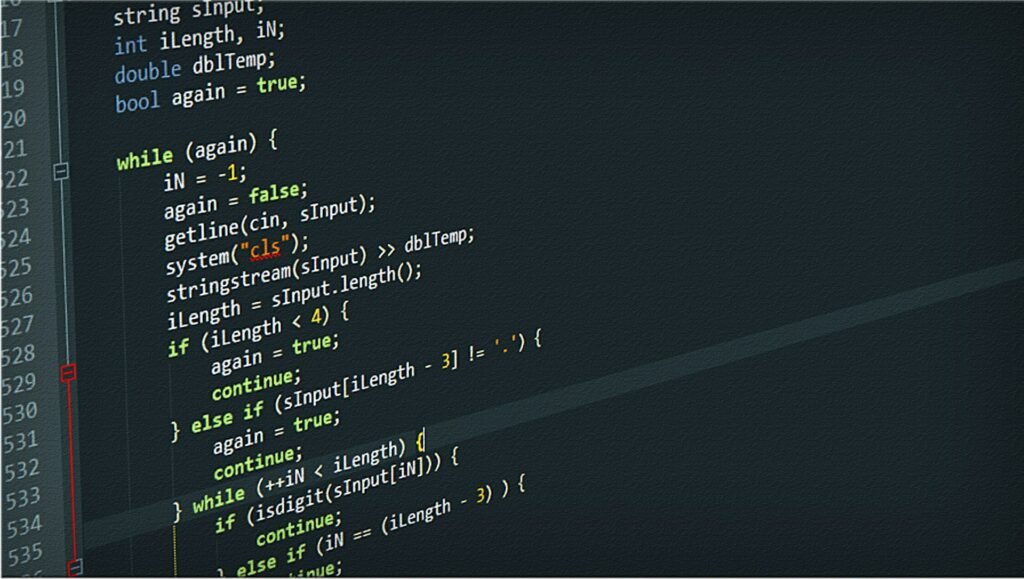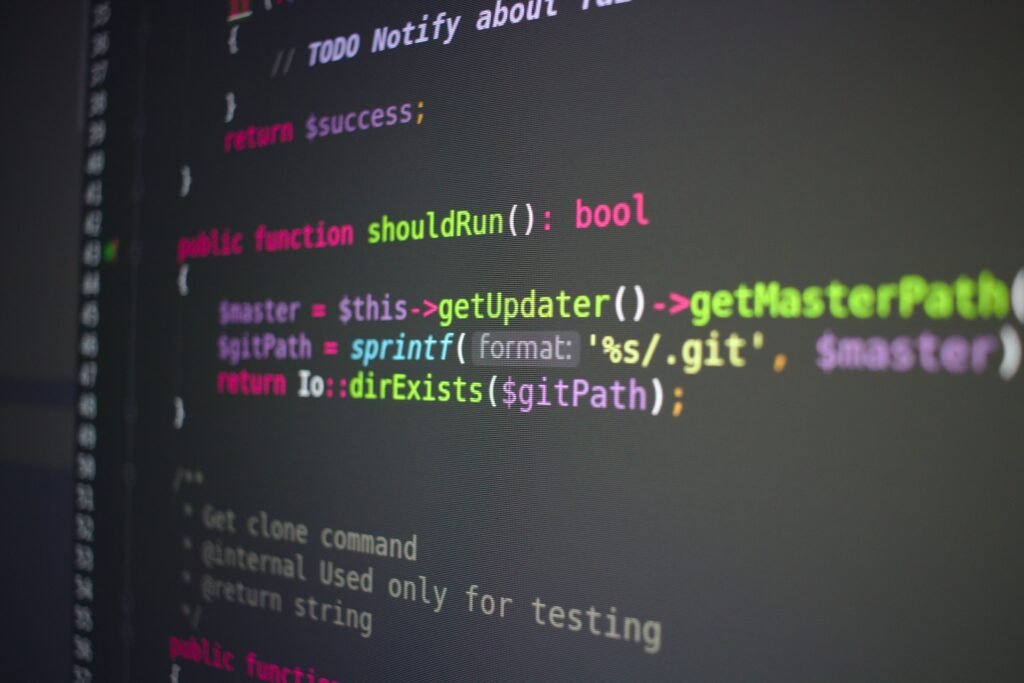Python Numpy
A strong numerical computation package for Python has the name numpy. It stands for “Numerical Python” and offers support for large, multi-dimensional arrays and matrices, as well as a wide number of mathematical functions to effectively work with these arrays.

It is widely used for many different activities, including data analysis, scientific computing, machine learning, and more. Numpy is a vital tool in the scientific Python environment. Many additional Python data science libraries and frameworks, such as pandas, scipy, scikit-learn, and tensorflow, are built on top of it.
What is numpy
Python has a robust numerical computing package known as numpy, which stands for Numerical Python. It supports massive, multidimensional arrays and matrices and offers a wide range of mathematical operations to effectively work with big arrays. In comparison to standard Python lists, numpy is meant to speed up and improve the efficiency of numerical operations on arrays.
The ndarray (n-dimensional array) object, which represents a grid of identical data values, is the foundational component of numpy. All of the items in a numpy array must be of the same data type since the arrays are homogenous. Any number of dimensions are possible for these arrays, ranging from one-dimensional vector arrays to two-dimensional matrices and beyond.
Here are a few of numpy’s most important characteristics and skills.
- Multi-dimensional array objects – numpy has an effective ndarray (n-dimensional array) object that makes it possible to effectively store and work with huge arrays of homogenous data. These arrays can include items of several data kinds and can have any number of dimensions.
- Quick and effective operations – Because numpy’s implementation is written in C, it performs numerical computations far more quickly than typical Python lists. It makes use of memory management strategies and specialized algorithms to execute mathematical operations on arrays quickly and effectively.
- Broadcasting – numpy presents the idea of broadcasting, which enables you to conduct actions amongst arrays of various forms. It conducts element-wise actions on arrays with suitable shapes automatically, doing away with the need for explicit loops and enhancing the readability of the code.
- Mathematical operations – on arrays element-by-element are made possible by numpy’s extensive library of mathematical operations. Basic mathematical operations, trigonometric functions, exponential and logarithmic functions, statistical functions, and more are among these functions.
- Manipulation of arrays – numpy has a large number of functions for reshaping, slicing, stacking, and other operations on arrays. You can easily divide or concatenate arrays, extract specific items or subarrays, modify the form, size, and dimensions of arrays, and more.
- Operations in linear algebra – numpy offers a collection of operations in linear algebra, including matrix multiplication, matrix factorization, eigenvalue computation, and more. Several scientific and engineering applications needs these processes.
Since numpy is not a part of the Python standard library, you must install it separately in order to use it. Using the pip package manager, you may install numpy by typing pip install numpy. Once numpy is installed, you can import it into a Python script or interactive session using the commonly used import numpy as np command.
After importing numpy, you may use its extensive collection of methods and capabilities to conduct mathematical operations, manipulate arrays, and build numpy arrays. To get started and explore numpy’s wide capability, the official documentation offers extensive details, tutorials, and examples.
Advantage and disadvantage of python numpy
Its many benefits make numpy a popular option for Python’s numerical computing.
Benefits of using numpy.
- Efficient array operations – numpy offers the ndarray object, which enables you to efficiently use arrays for element-wise operations. These operations are quicker than conventional Python loops since they are implemented in C and carried out at a lower level.
- Support for multi-dimensional arrays – Working with matrices, vectors, and higher-dimensional data is made simpler by numpy’s ndarray object’s support for multi-dimensional arrays. It offers simple and effective methods for dealing with and evaluating these arrays.
- Broadcasting – You may conduct actions between arrays of various forms using numpy’s broadcasting functionality. By automatically aligning array dimensions and executing element-wise actions without the use of explicit loops, it makes dealing with arrays easier.
- Comprehensive mathematical functions – numpy provides a large selection of mathematical operations that effectively work with arrays. Basic mathematical operations, trigonometric functions, exponential and logarithmic functions, statistical functions, and more are among these functions. They offer high-performance implementations and are specifically designed for numerical computations.
- Compatibility with the Python ecosystem – numpy works well with the other libraries and frameworks for scientific computing that are part of the Python environment. Many higher-level libraries, including pandas, scipy, scikit-learn, and tensorflow, are built on top of it, enabling efficient data processing and smooth integration.
- Memory efficiency – numpy arrays use less memory than Python lists do. Because numpy arrays are homogenous, it is possible to manage memory more effectively and eliminate the memory cost associated with keeping type information for each element in the array.
Numpy provides a number of benefits, but it also has several restrictions and possible drawbacks.
The disadvantage of numpy.
- Lack of flexibility for non-numerical data – numpy is primarily intended for numerical operations, hence it may not be the ideal option for handling non-numeric or heterogeneous data. Lack of flexibility for non-numerical data. Other libraries, such pandas, may be better appropriate if you need to interact with non-numeric data types often.
- Numpy has its own syntax and conventions – which might be difficult for newcomers who are unfamiliar with Python or numerical computation. Numpy’s features may take some understanding and experience to comprehend and use successfully.
- Limited support for parallel computing – Despite effectively handling array operations, numpy only offers a limited amount of parallel computing assistance. It does not automatically spread calculations across dispersed systems or many cores. For more complex parallel computing jobs, you can use additional libraries like Dask or numpy extensions like numpy/scipy with parallelization capabilities.
- Large memory consumption for large arrays – numpy arrays tend to use a lot of memory, especially when the arrays are huge and have many items. When working with memory resources that are scarce or managing exceedingly big datasets, this memory demand may be a constraint.
Best characteristics of python numpy
Python numpy’s popularity and efficiency in numerical computation are largely due to a number of exceptional features.
- Effective array operations – Effective array operations are at the heart of numpy’s capabilities. It gives users access to a powerful ndarray object that enables quick element-wise calculations and vectorized operations. These operations are extremely effective because they are implemented in low-level languages like C or Fortran.
- Support for multi-dimensional arrays – Multi-dimensional arrays are crucial for scientific computing, and numpy excels at handling them. It makes it simple to handle arrays with any number of dimensions and to slice them up and index them. Working with matrices, tensors, and other multi-dimensional data structures is made simple as a result.
- Broadcasting – numpy’s broadcasting functionality makes it easier to interact with arrays of various forms. As a result, element-wise actions may be performed without the use of explicit loops by automatically aligning dimensions and broadcasting arrays to suitable forms. This improves the readability of the code and lessens the need for repeating tasks.
- Wide variety of mathematical operations – numpy offers a huge selection of operations that are optimized for arrays. Basic arithmetic operations, mathematical transformations, statistical computations, linear algebra operations, and other operations are among these functions. They perform far better than identical actions carried out using normal Python functions or loops because to their excellent efficiency.
- Numpy’s seamless integration with the Python ecosystem’s – other scientific computing libraries and tools is one of its main strengths. Several higher-level libraries, including pandas, scipy, scikit-learn, and tensorflow, are built on its base. Data analysis, machine learning, and scientific research may all benefit from the easy data interchange, interoperability, and integrated usage of many libraries made possible by this integration.
- Memory efficiency – numpy arrays use less memory than typical Python lists. Due to the fact that type information is only kept once for the whole array, the homogenous nature of arrays enables easier memory management. Performance is enhanced, particularly when dealing with huge datasets, and memory overhead is decreased.
- Excellent official documentation – that covers numpy’s features, use, and examples; and active community support. The larger Python community offers a wealth of assistance and materials, such as tutorials, forums, and code samples. This makes it simpler for users to understand, troubleshoot, and work together on numpy-related projects.
- Language compatibility – numpy arrays may be quickly exchanged for arrays created in other languages including C, C++, and Fortran. This feature makes it possible to seamlessly combine numerical calculations done in several languages, allowing for the implementation of performance-critical parts in lower-level languages while still utilizing numpy’s high-level capabilities.
Numpy in python
A popular Python package for numerical computing is called numpy. Along with a vast number of mathematical functions, it supports efficient operations on big, multi-dimensional arrays and matrices. Numpy was created to make numerical computations easier and faster than they would be using a conventional Python list.
Installing numpy is necessary for using it in Python. Running the command pip install numpy in your terminal or command prompt will allow you to install numpy using the package management pip. Once numpy is installed, you can use the import numpy as np command to add it to a Python script or interactive session. Numpy is frequently referred to by the np alias.
Here are a few Python usage examples for numpy.
- Creating numpy arrays – There are several methods you may use to generate numpy arrays, including numpy.array(), numpy.zeros(), numpy.ones(), numpy.arange(), and more. An illustration.
Import numpy as np
# 1-dimensional array example
Array1 = np.array([1, 2, 3, 4, 5])
# 2-dimensional array example
Array2 = np.array([[1, 2, 3], [4, 5, 6]])
Numpy python library
Python has a strong library for numerical computing named numpy. It stands for “Numerical Python” and offers a variety of mathematical functions as well as support for effective operations on big, multi-dimensional arrays and matrices. For data analysis, scientific computing, machine learning, and other purposes, numpy is a key component of the scientific Python environment.
Here are some of the numpy library’s primary attributes and features.
- Ndarray object – The ndarray (n-dimensional array) object, which symbolizes a grid of identical data values, is the foundational element of the numpy programming language. Because numpy arrays are homogenous, every element in the array needs to be of the same type. They allow for the effective handling of multi-dimensional data and can have any number of dimensions.
- Efficient array operations – numpy’s optimized implementations in low-level languages like C or Fortran provide efficient element-wise operations on arrays. When compared to identical operations carried out using ordinary Python lists or loops, these operations are quicker.
- Broadcasting – numpy’s broadcasting functionality makes it easier to interact with arrays of various forms. As a result, element-wise actions may be performed without the use of explicit loops by automatically aligning dimensions and broadcasting arrays to suitable forms.
- Mathematical operations – numpy offers a large selection of mathematical operations that effectively use arrays. These operations include fundamental operations in algebraic geometry, trigonometric functions, exponential and logarithmic functions, statistical functions, and more.
- Indexing and slicing of arrays – numpy provides robust indexing and slicing features to access and edit array items or subsets. To extract certain items or subarrays, you can use boolean indexing, slicing notation, or integer indexing.
- Array manipulation – numpy has methods for splitting, reshaping, concatenating, and other array-related operations. Arrays can be transposed, split into several smaller arrays, concatenated or stacked, changed in shape, size, and dimensions, and more.
- Numpy’s seamless integration with the Python ecosystem’s – other libraries and tools. Numpy is a part of the Python data science ecosystem. It enables effective data manipulation and interoperability and serves as the basis for numerous higher-level libraries, including pandas, scipy, scikit-learn, and tensorflow.
Numpy install
The package manager pip (Python Package Installer), which is frequently used to install Python software, may be used to install numpy.
The steps to install numpy are shown below.
- Verify Python installation – Verify that Python is installed on your computer. To determine the Python version, use a terminal or command prompt and type the command python –version or python3 –version. If Python isn’t already installed, go to https://www.python.org to download and install it.
- Update pip (optional) – Before installing numpy, it is advised to update pip to the most recent version. To update pip, enter the following command.pip install –upgrade pip
- Install numpy – Once you have Python and pip set up, open a terminal or command prompt and run the following command to install numpy.
- Pip install numpy
- The Python Package Index (pypi) will be used to obtain and install the most recent version of numpy using this command. If you have Python 2 and Python 3 installed, you might need to use pip3 instead of pip depending on your system settings.
- Check for installation issues – After the installation is finished, you may check to see if numpy was installed correctly by importing it in a Python script or interactive session. Run the following command after starting a Python interpreter or writing a Python script.
- Import numpy as np
If there aren’t any mistakes, numpy has been set up properly.
Create numpy array
Here are a few illustrations of how to make numpy arrays in various ways.
- Making use of Python lists.
- The numpy.array() method allows you to generate a numpy array by providing it a Python list.
Import numpy as np
# Create a 1D array
Array1 = np.array([10, 21, 31, 41, 51])
Print(array1)
Output – [10 21 31 41 51]
# Create a 2D array
Array2 = np.array([[10, 12, 13], [14, 15, 16]])
Print(array2)
Output –
# [[10 12 13]
# [14 15 16]]
Array in python numpy
The ndarray (n-dimensional array) object is referred to as an array in the numpy library for Python. The main data structure for grid-like storage and manipulation of homogenous data in Python is an array. A multi-dimensional, flexible, and effective container for arrays of the same data type is represented by the ndarray object.
Import numpy
The import statement in Python may be used to import the numpy library.
Here is a guide on importing numpy.
Import np as Numpy
In the code above, the library’s name is numpy, and np is an alias or shorthand for numpy that is frequently used. You may use the alias np to refer to the library in your code by importing numpy with the as np command.
After importing numpy, you may use it by prefixing functions, methods, and objects with np. For instance, you may use np.array() to build a numpy array and np.function_name> to execute mathematical operations or apply functions.
Numpy versions
List of Python np array version.
- Numpy 1.0.0
- Numpy 1.1.0
- Numpy 1.2.0
- Numpy 1.3.0
- Numpy 1.4.0
- Numpy 1.5.0
- Numpy 1.6.0
- Numpy 1.7.0
- Numpy 1.8.0
- Numpy 1.9.0
- Numpy 1.10.0
- Numpy 1.11.0
- Numpy 1.12.0
- Numpy 1.13.0
- Numpy 1.14.0
- Numpy 1.15.0
- Numpy 1.16.0
- Numpy 1.17.0
- Numpy 1.18.0
- Numpy 1.19.0
- Numpy 1.20.0
- Numpy 1.21.0






































































































































































